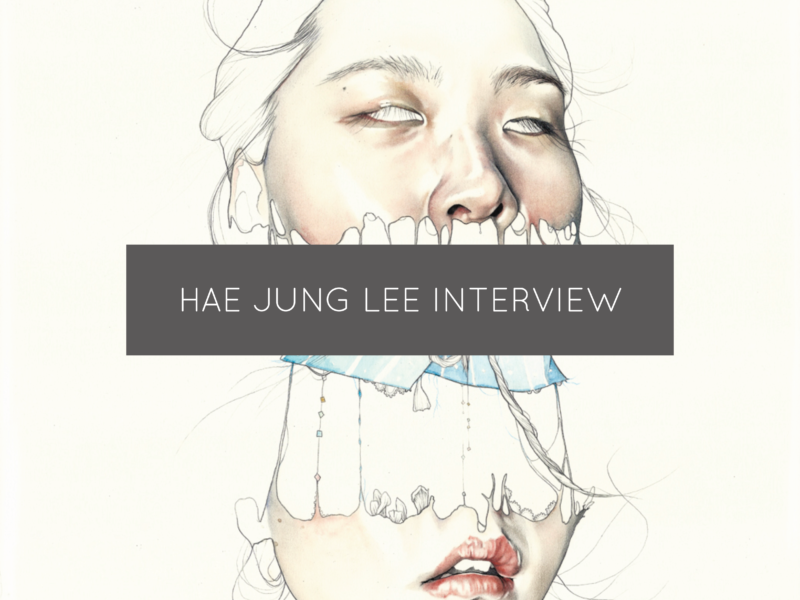This sixth, and penultimate, interview is with Hae Jung Lee whose work I have always really admired and continues to be up there with some of my favourites.
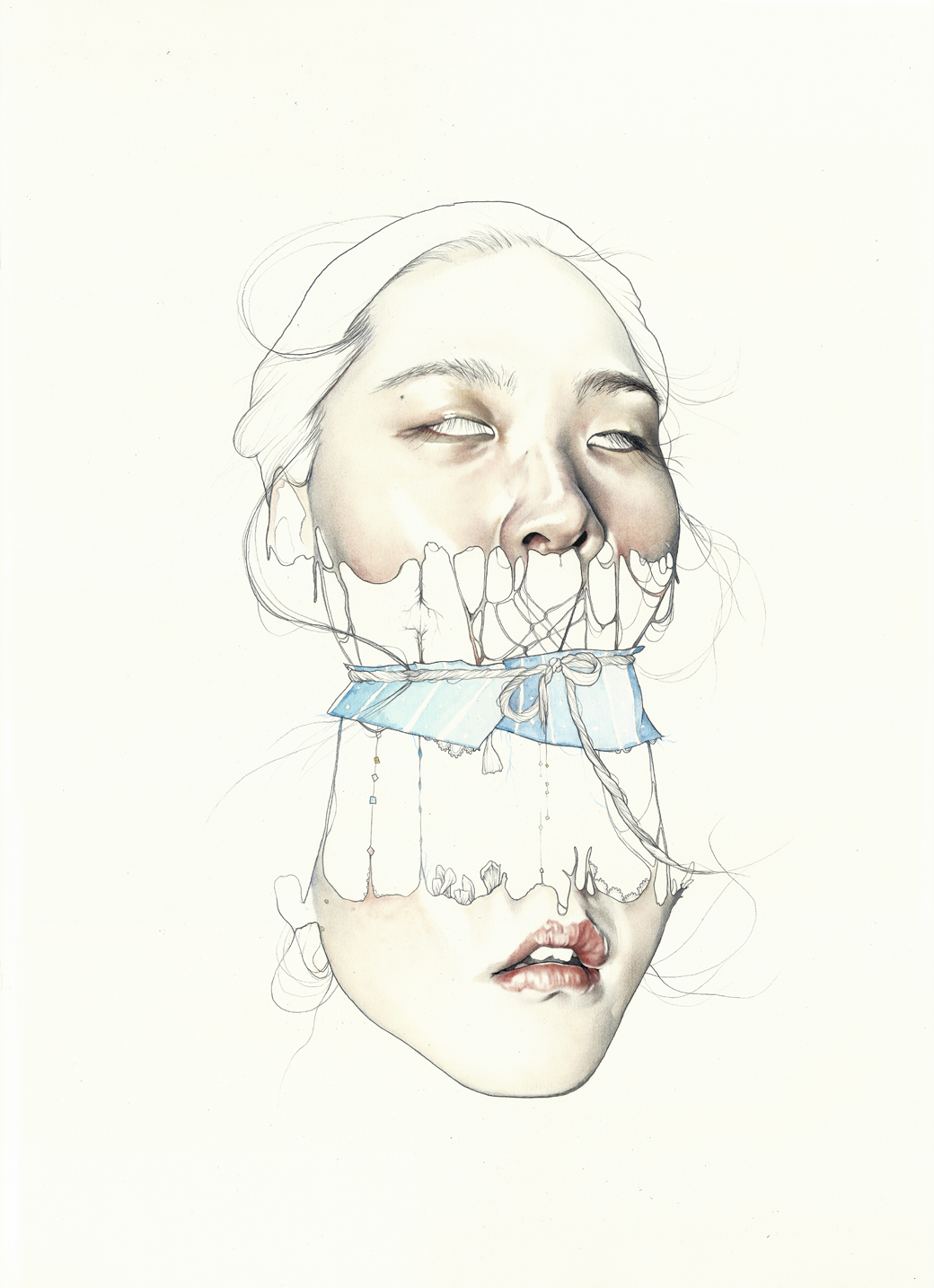
INEVITABLE/HAE JUNG LEE
Capturing the personal moments that may otherwise be forgotten and overlooked is the focus of Toronto-based illustrator Hae Jung Lee’s portrait based work. Lee produces exquisitely rendered fragments of faces, which are framed by and often interact with surreal elements such as mushrooms, bunting, and sewing needles. These surreal elements are Lee’s way of capturing the subject’s thoughts and feelings in as much detail as their eyelashes, so that her highly constructed offer the audience a realistic view of their exterior as well as an allegorical look at their interior. Lee’s work is an archive of the most intimate kind, as she works almost exclusively with images of herself, depicting her own “fragments of memories, moments within time, or internal struggles”. Each of her works is a snapshot of a past, and sometimes present, self.
However, Lee’s work not only acts as personal journal, but also a means of questioning the way we remember things. For me, this can be seen in the looping, almost melting, edges of the portraits suggest both the fabric of memory and the way the realistic elements of our thoughts bleed into the more abstract. Additionally, Lee’s selection of visual mementos become curioser and curioser as we are allowed to delve into the rabbit hole of her psyche, raising questions of what it is we remember and why those things linger in our minds.
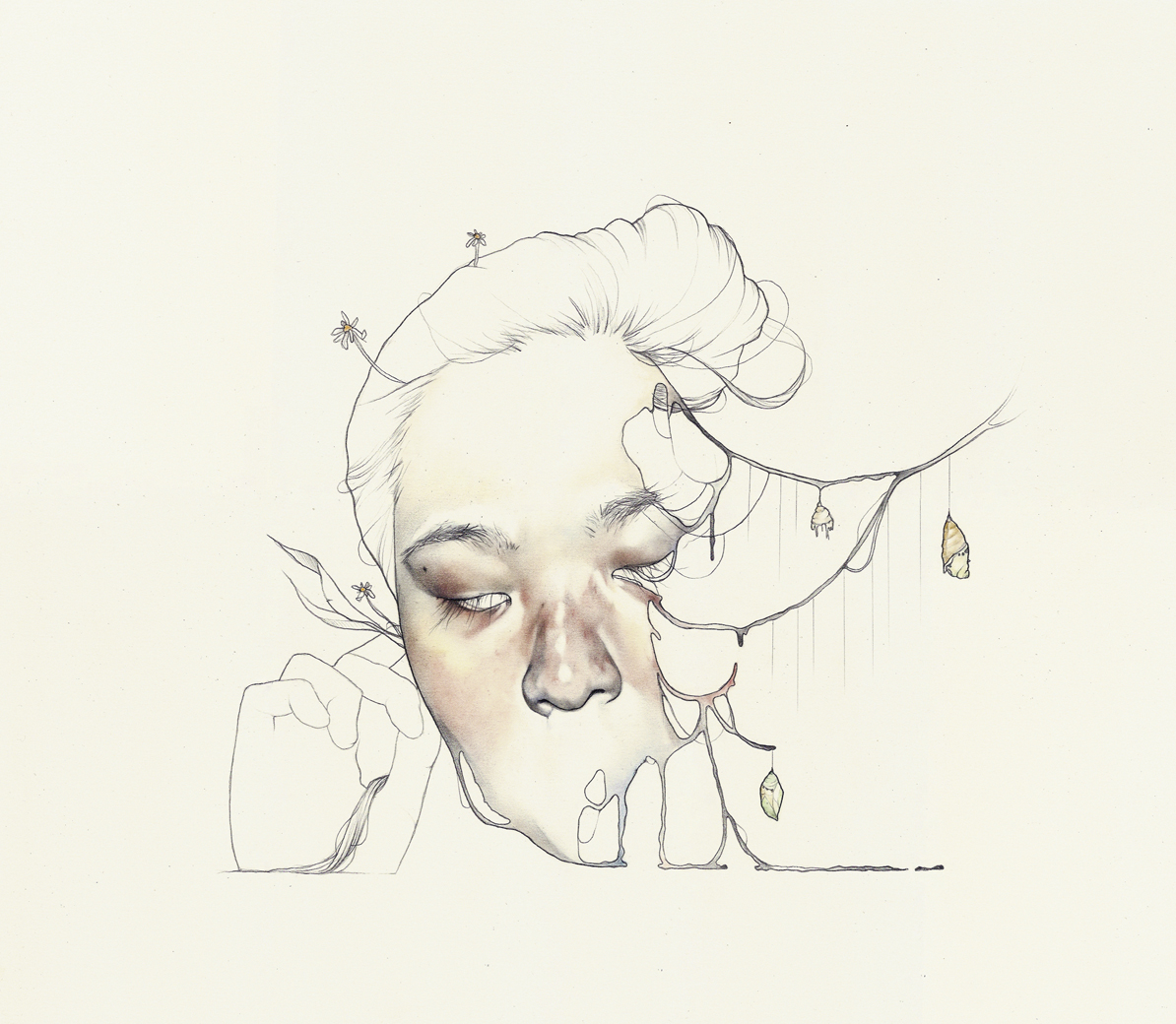
COCOONS/HAE JUNG LEE
Lee’s archive differs from the form of a blog and the cultural phenomenon of the selfie, not only in its considered aesthetic value but also it’s purpose. Due to the symbolic nature of Lee’s work, the hermeneutic process the audience has to undertake means that the portrait becomes an image of the viewer as well as the artist. In Lee’s own words her “works are presented to the viewers in hope of evoking their own life’s details and find beauty in the little details that make up who they are”. This quest to connect with her audience and to prompt them into accessing their own archive of the elements of themselves that “otherwise may be forgotten through time” has led to Lee’s use of, and subsequent popularity on, social media as the most efficient tool we have today to reach out to a vast array of people on a global scale.
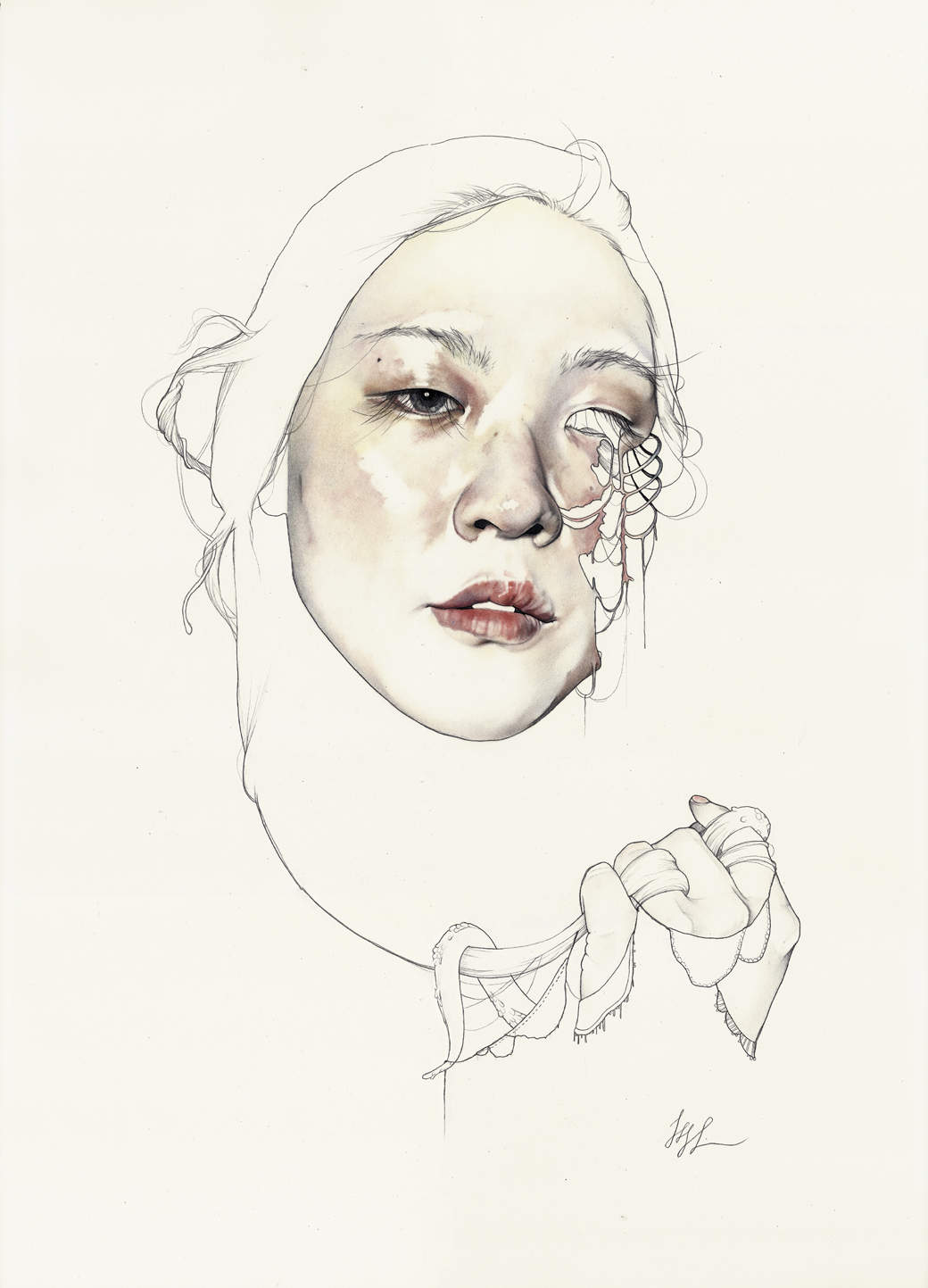
LETTING GO/HAE JUNG LEE
From what I can see you’re currently on Tumblr, Instagram, and Facebook as well as having your own website (unless I’ve missed any). How does the internet feature in your process and life as an artist?
I hold a significant value in the interaction between my work and the viewer within my artistic practice so internet helps me tremendously by connecting my work with so many people all around the world.
Some artists I’ve spoken to have mentioned how the online culture of reposting work has negatively affected them as it means their work goes creditless. Have you had any negative experiences with uploading your work to social media?
I’ve had minor issues where personal works of mine had been mislabelled or important informations have been overlooked, but I guess I could be oblivious to works that are totally uncredited because I would not be able to find out myself. It is definitely an issue that is always lingering at the back of my mind.
Do you look anywhere outside of your own internal structure for inspiration, for example any other blogs?
I don’t think I’ve ever looked for inspiration externally in regards to my art. When I have nothing to draw, that means that I’m either numb and incapable of feeling at that moment or something bigger is brewing inside that is not quite ready to burst apart yet. It never lasts very long though. I don’t force anything when it comes to my art (or anything I do in life as a matter of fact), because that would mean I’m doing it for all the wrong reasons.
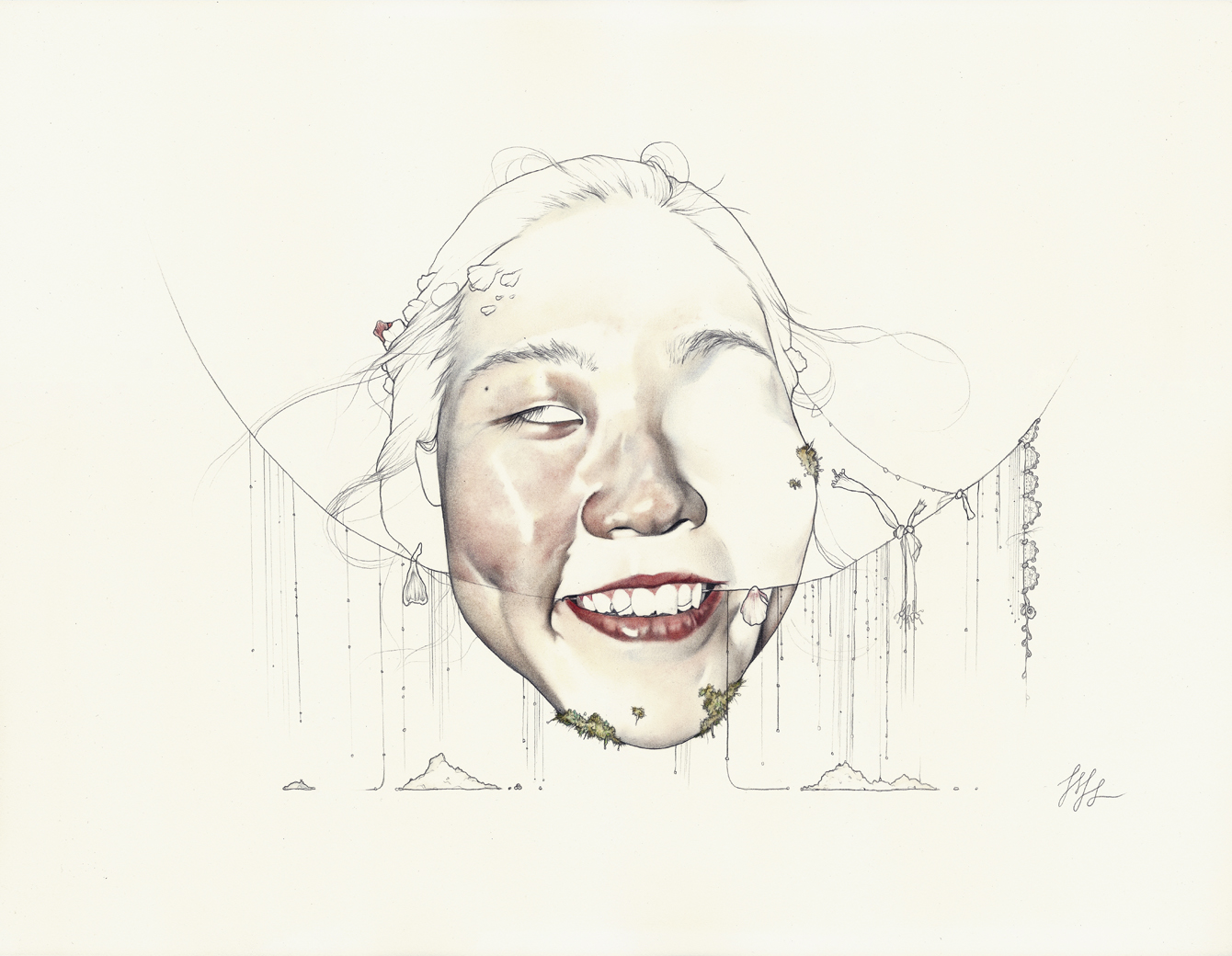
SUGAR RUSH/HAE JUNG LEE
You mention quite often in your artist’s statements that you have an “obsession with documentation”, do you think the current culture of blogging and tweeting to document your life is connected or parallel to that obsession in any way?
My obsession with documentation is a way for me to internalize my thoughts and feelings and better understand myself as an individual. I’ve always had too much unorganized thoughts in my head so it was a way for me to capture those fleeing thoughts and feelings on a piece of paper before it disappeared. It is very much comparable to writing a personal diary. I think the use of social media today is quite different to my own intentions with regards to my obsession. Social media, to me, seems to be a way for people to externalize, expose or to purge out a personal thought or information outwards to the public.
How do you organise those “unorganized thoughts”, enough to structure them into such well composed images?
I would say that each piece I make is mere organized chaos. I find great relief in drawing with a lot of breathing space and well defined lines because it directly contrasts with a chaotic mind. I remember writing on a notepad not too long ago, actually, thinking how I would love to one day create a piece with a single line on a blank piece of paper that contained all my deepest, darkest problems and happiness that defined my life. I laughed at myself afterwards.
As your work is a way of internalizing and processing, do you ever feel uncomfortable sharing your most intimate internalized thoughts to an external audience?
I don’t feel uncomfortable at all sharing my work to the external audience. I would, however, feel very uncomfortable and a bit disturbed if somebody saw my work and knew the exact meaning embedded within it.
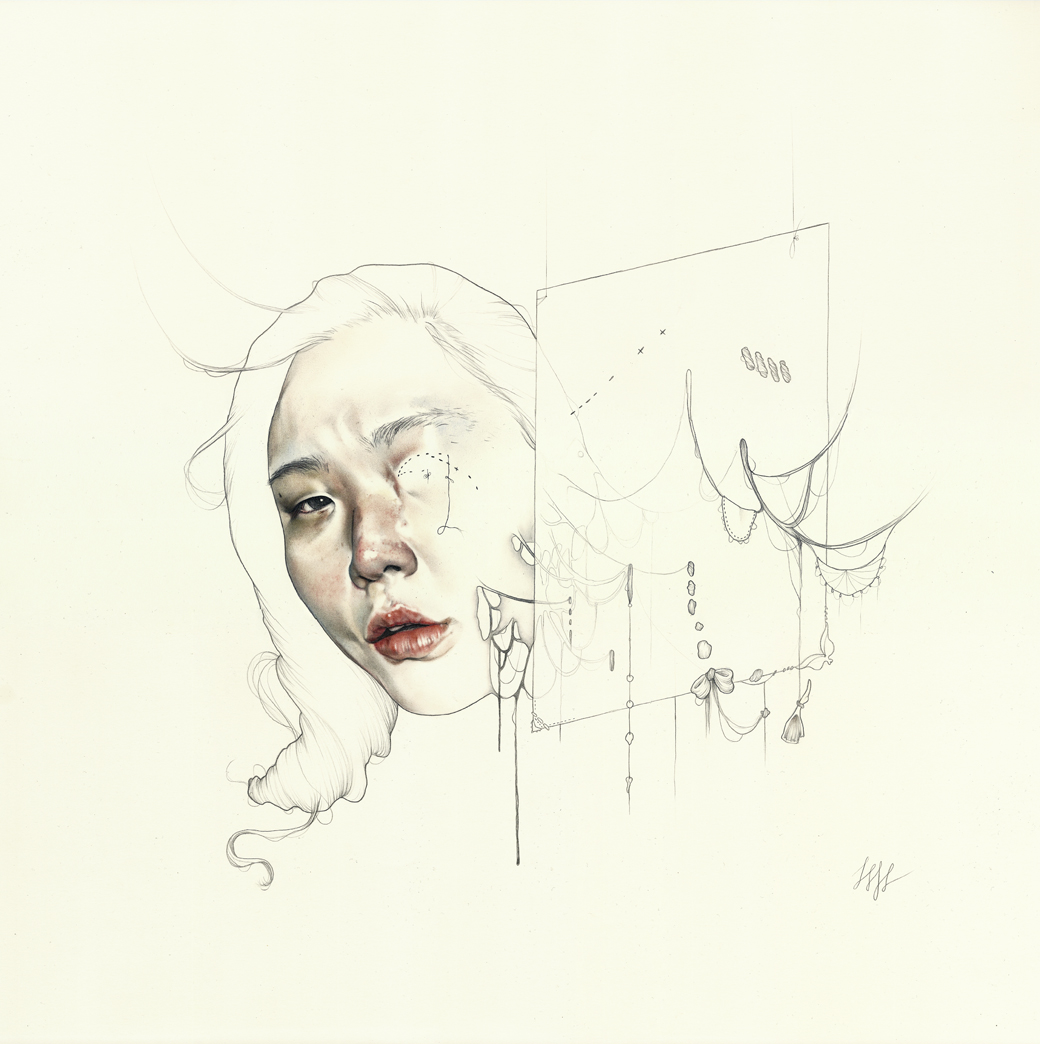
COPY PASTE/HAE JUNG LEE
Your alteration of the form of the portrait is what I find most captivating about your work. Could you say a little on your use of one face (your face) throughout your work and your process of reworking the image of that face to represent the idea you’re attempting to internalize?
The literal use of self-portraiture is quite straightforward and self-explanatory for me in relations to my artist statement. I’ve recently been imagining my face as a sort of a landscape of my mind. It’s hard for me to explain it in exact words as to what that means so I will give an example. When a tear drops off of an eye, a living organism is able to feed off of it and grow around it. It’s a small ecosystem that circulates matters in my mind. By interpreting it that way, my suffering has a purpose and I am, in turn, able to cope better with it, if that makes any sense at all.
That’s a really wonderful way of looking at your art, using it as a way to shape your life philosophy. Are there any other ways in which you feel art helps mould or has moulded your life?
Sometimes I’m not sure if I am shaping my art or my art is shaping me. My art needs my experiences in order to be created but I need my art to see who I am as an individual. Personally, art has opened my eyes to view the world critically with my own perceptions and opinions rather than with collective, conformed ideas acceptable by standards of society.
Within your use of portraiture, you also seem to have created a consistent aesthetic voice. What was the process of finding that voice, and do you ever worry you’ll be trapped by it?
I feel like consistency is what I am always looking for because I’m often bombarded with broken and inconsistent thoughts in my mind. Having said that, people always evolve and change based on life experiences. The consistency I have now is what makes sense to me at this moment based on what I’ve experienced so far. I always try to keep an open mind to things and challenge myself on different levels so I would be deeply concerned if I had the same mindset I have now 5-10 years from now.
So, how do you see your work developing in the future? Or is it completely dependent your personal experiences?
Yes, My works are very much dependent on my personal experiences. I’m often very impulsive and indecisive so even if I had a plan of any kind, I don’t even trust myself on it.
You can check out more of of Hae Jung Lee’s work on Tumblr, Instagram, or on her website.


